When I was in primary school, implicit divisions ran riot. There were cliques of pretty girls who would spent their lunchbreaks performing Spice Girls covers for the homosexual teaching assistant. Tough boys with a love of playing British bulldog and Manchester United. The quiet, nice kids who would hang out with the dinner ladies. Children were ostracised for being camp, unintelligent or explicitly poor, but also for wearing the wrong headband or being the first to have their period. But there was something that had the power to raise you up as a person worthy of attention: something that didn’t necessarily make you cool, but certainly gave you a gimmick: a Beanie Baby collection.
It has been 25 years since Beanie Babies first became a sensation. While they were actually created in 1993, a work of marketing genius in the tail end of 1995 turned them into a must-have. When Lovie, a stuffed lamb from Ty’s non-Beanie collection, had to be discontinued, there was a small uproar. People loved their little white sheep, and were livid to discover that Lovie would no longer be available. So, rather than confess that the lamb was disappearing because of supply issues, Ty told shops that Lovie was being retired. Those who already had one were thrilled that they were lucky enough to have snapped up the sheep in time. For those sad to have missed out forever, Lovie became a unicorn, an unreachable goal, an object of true desire. Sensing this shift in the way consumers viewed the product, Ty began retiring their Beanie Babies on purpose. It created mass hysteria in the toy world.
Suddenly, obtaining the latest Beanie Baby became a matter or urgency. Collectors emerged, who dedicated their lives to finding and buying every offering. The menagerie of animals on offer increased, and demand soared. Rabbits. Horses. Turtles. Elephants. Even lobsters. And, of course, the classic bear, in a range of different colours and commemorative editions, like the Princess Diana memorial bear sold in 1997.
14 Things We Still Want From The 1999 Argos Catalogue
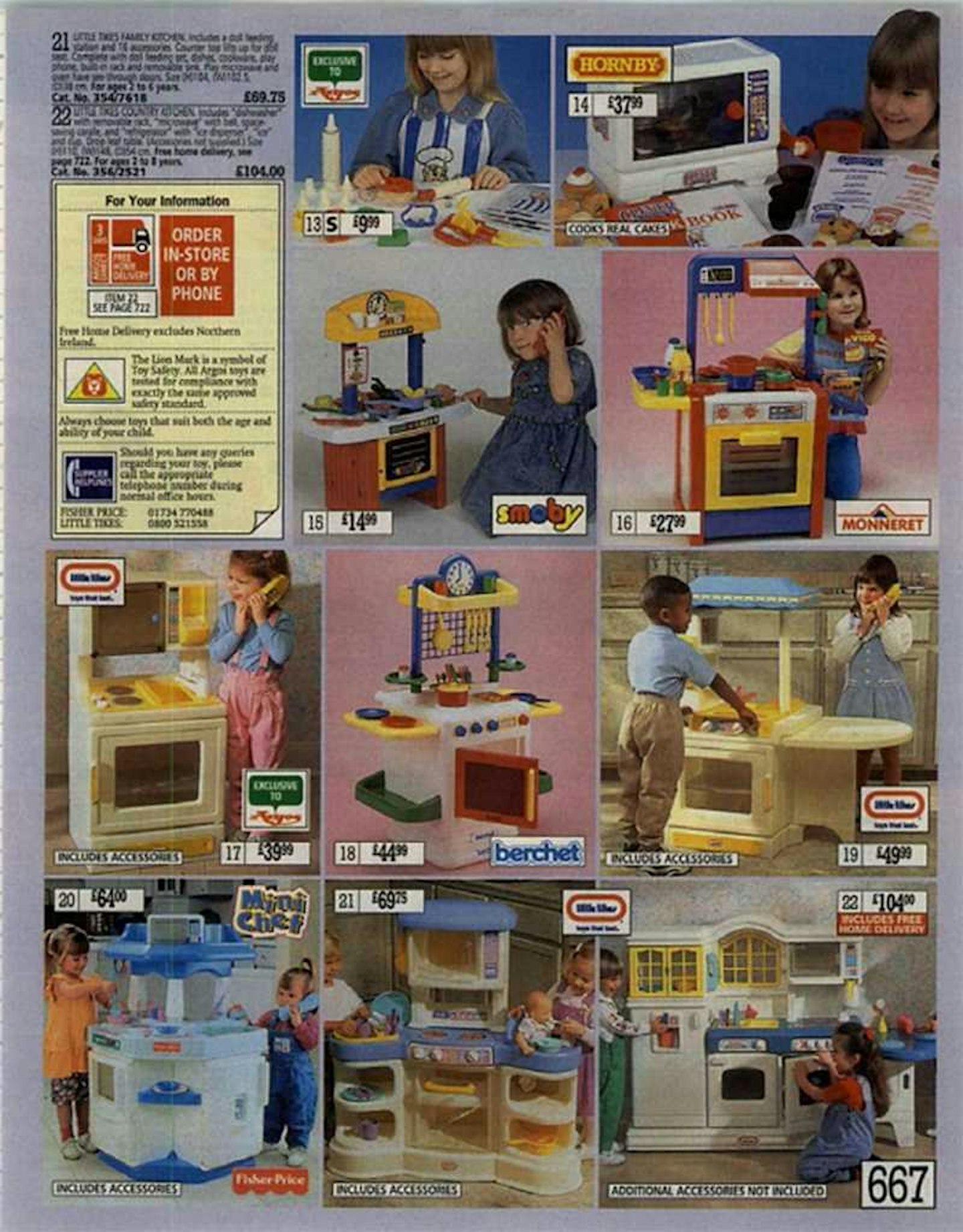 1 of 14
1 of 141. Easy Bake Oven
What says a young girl constrained by the gendering of their sex more than a desperate desire to be the sole proprietor of a kitchen tool?
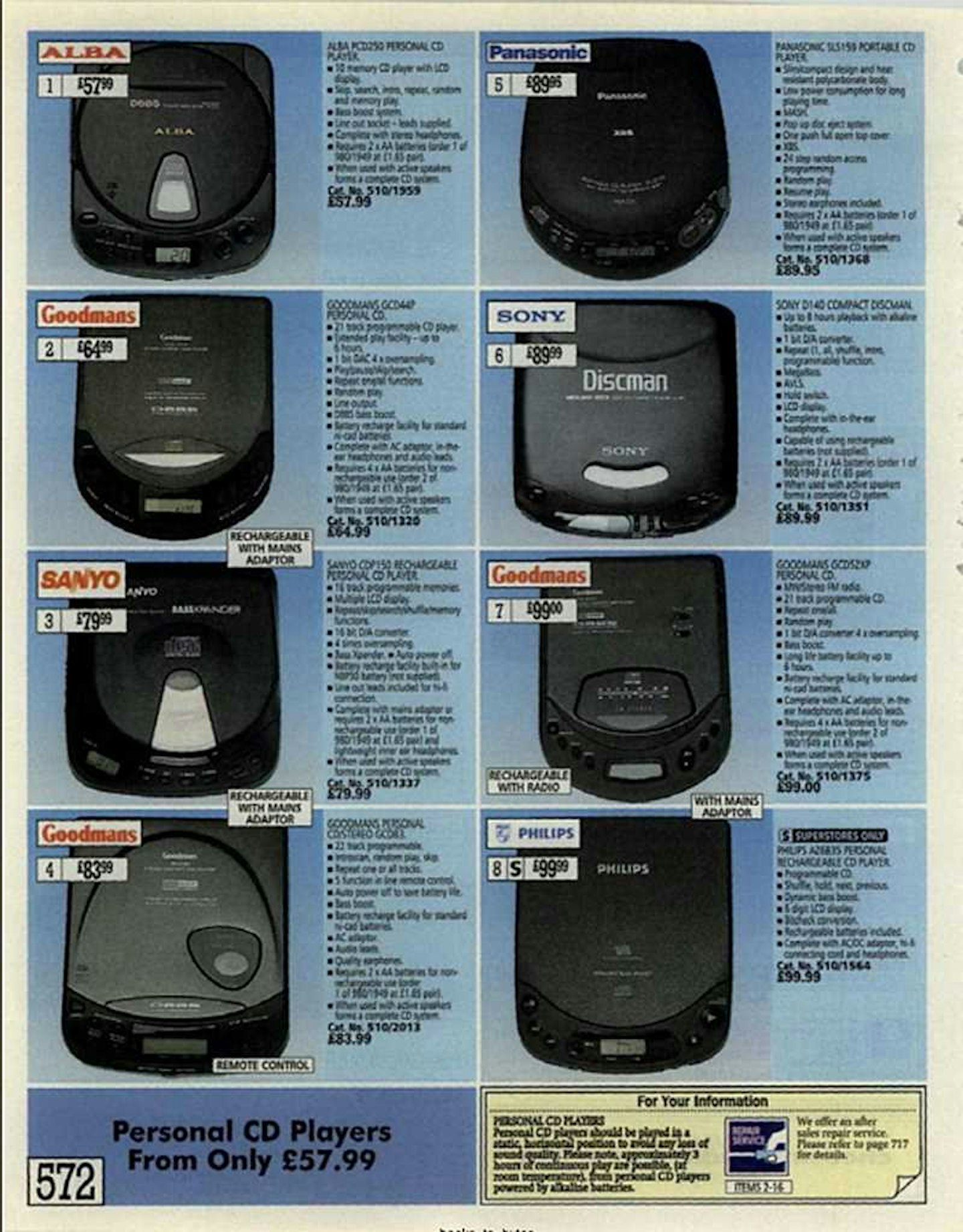 2 of 14
2 of 142. Discman
SO high-tech for 1999.
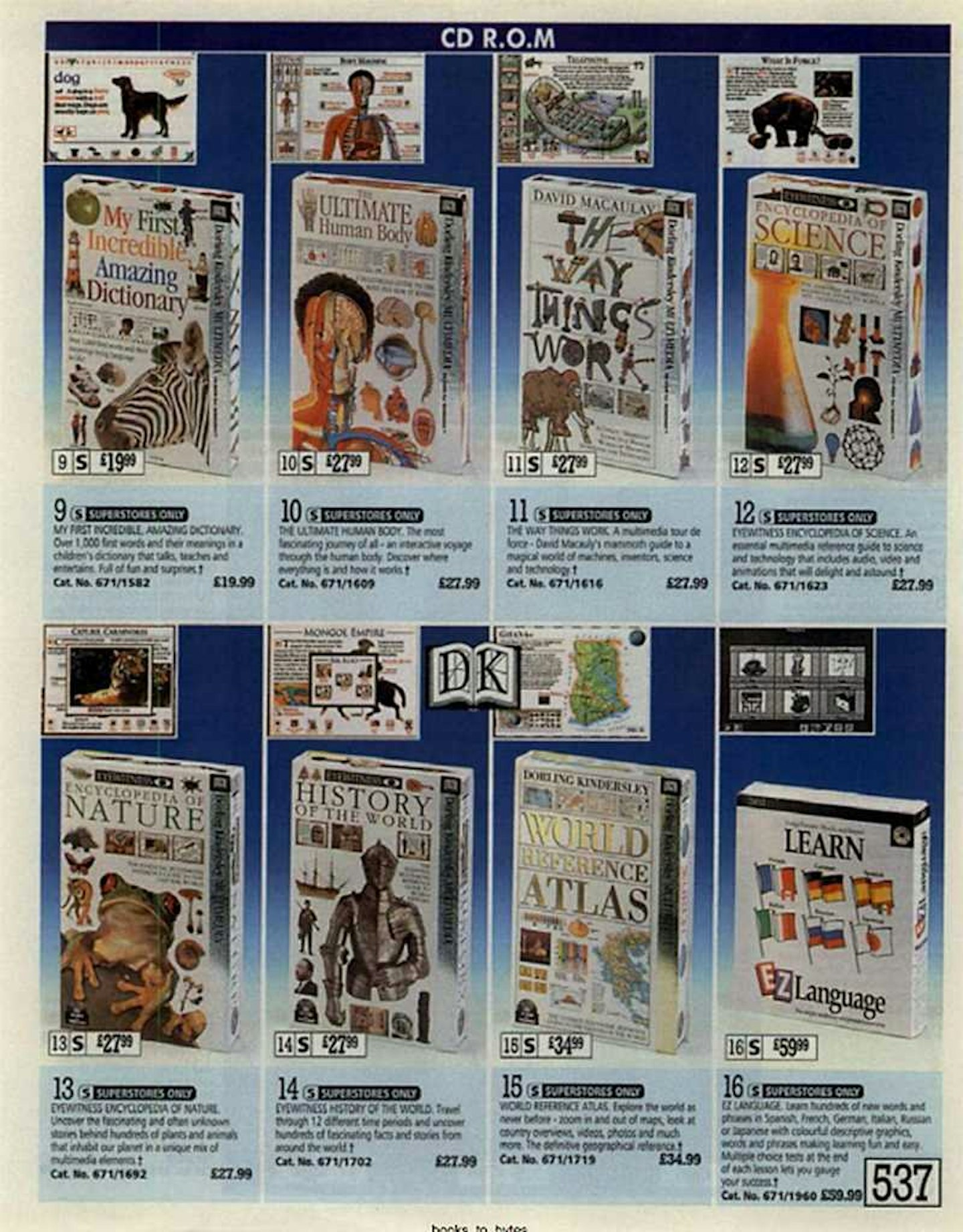 3 of 14
3 of 143. The Way Things Worked
You knew you were a cool kid when you had this series before the school library did.
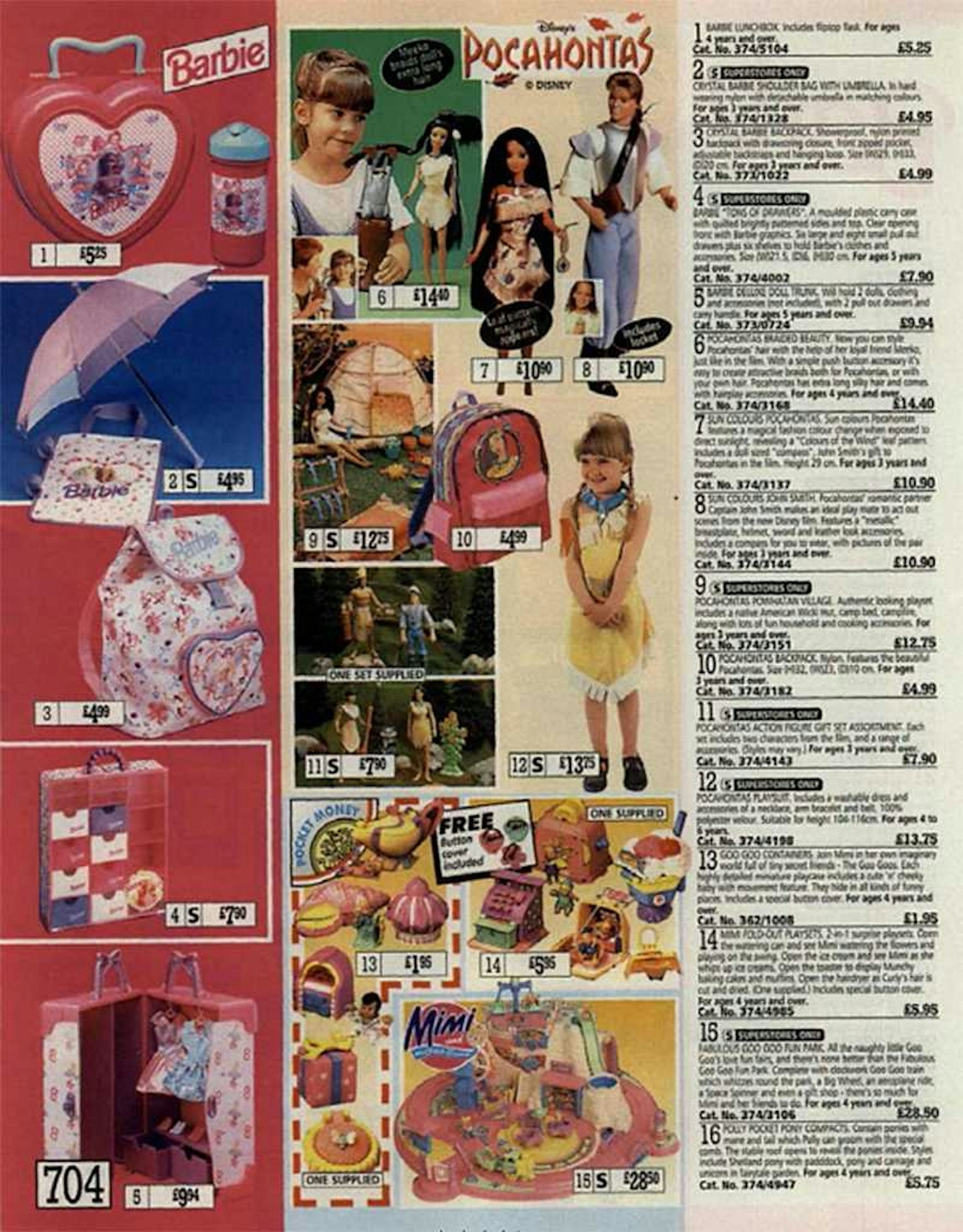 4 of 14
4 of 144. Pocahontas Costume
In the woke light of today, it's a no.
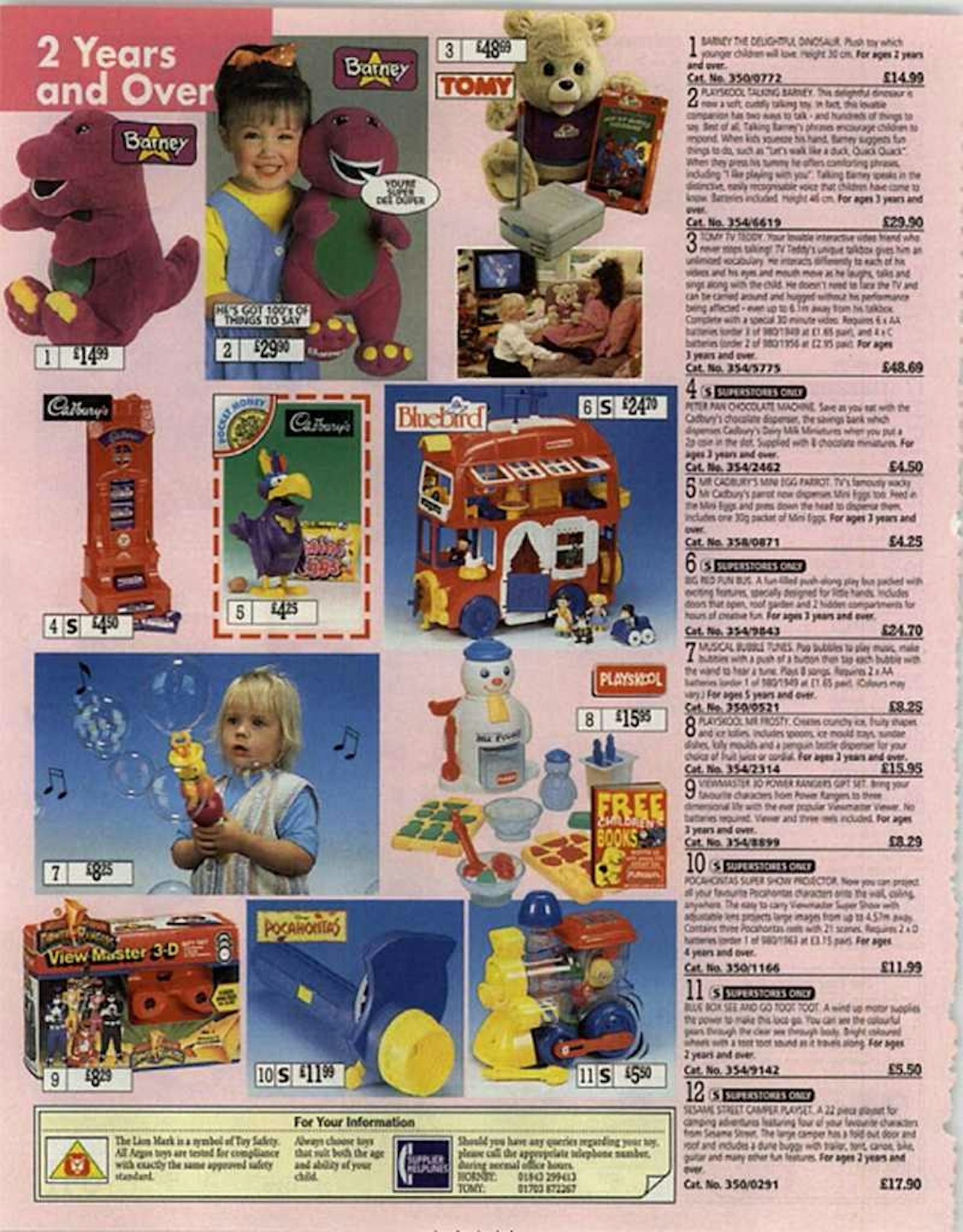 5 of 14
5 of 145. Mr Frosty Ice Cream Factory
Never trust a child that makes their own ice.
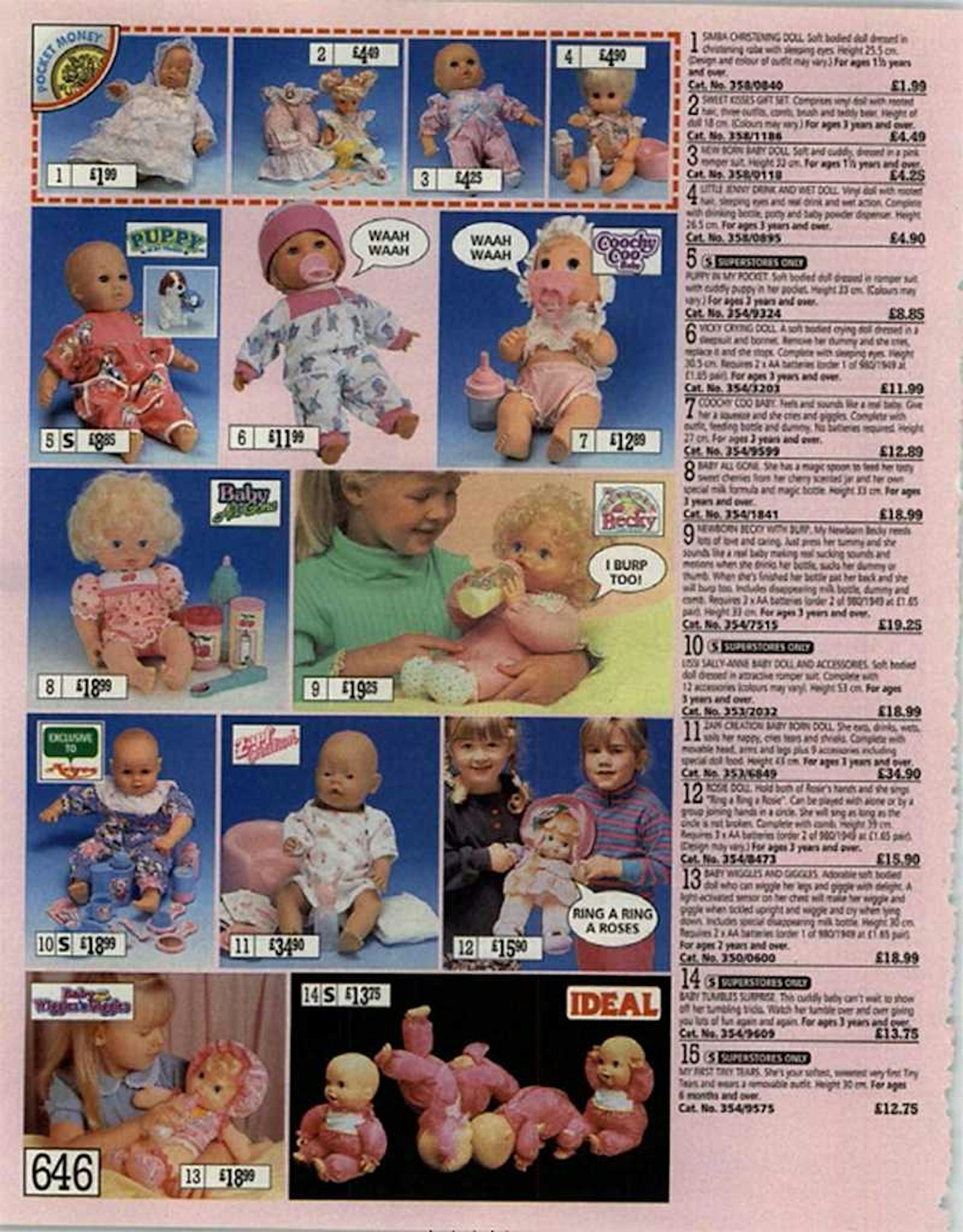 6 of 14
6 of 146. Baby Born
On reflection, what was possibly fun about having a doll that constantly needed feeding and then weed everywhere?
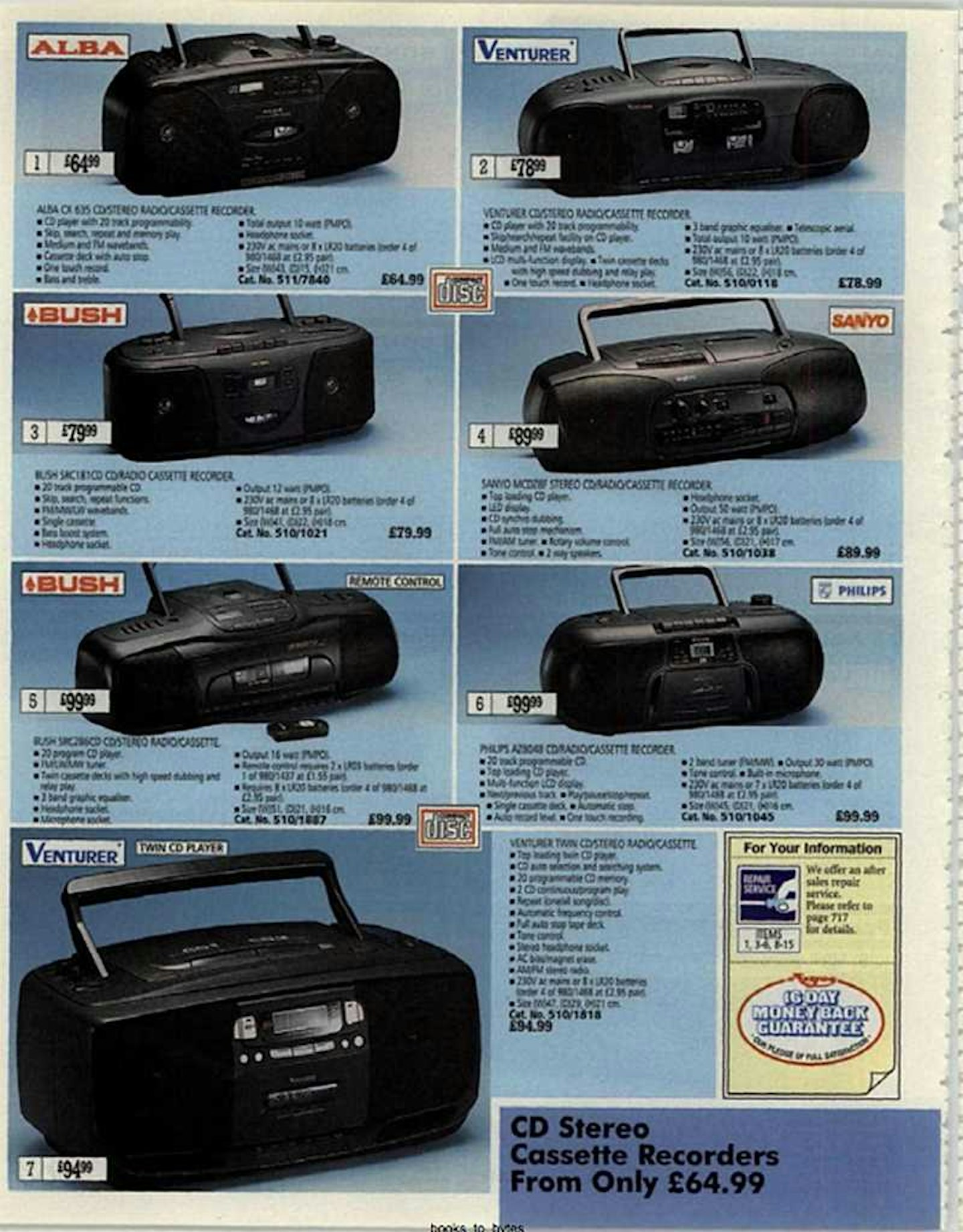 7 of 14
7 of 147. CD Stereo
On reflection, it makes sense why our parents wouldn't buy us a portable radio, because really what self-respecting adult can listen to B*Witched blaring at top volume all hours of the day?
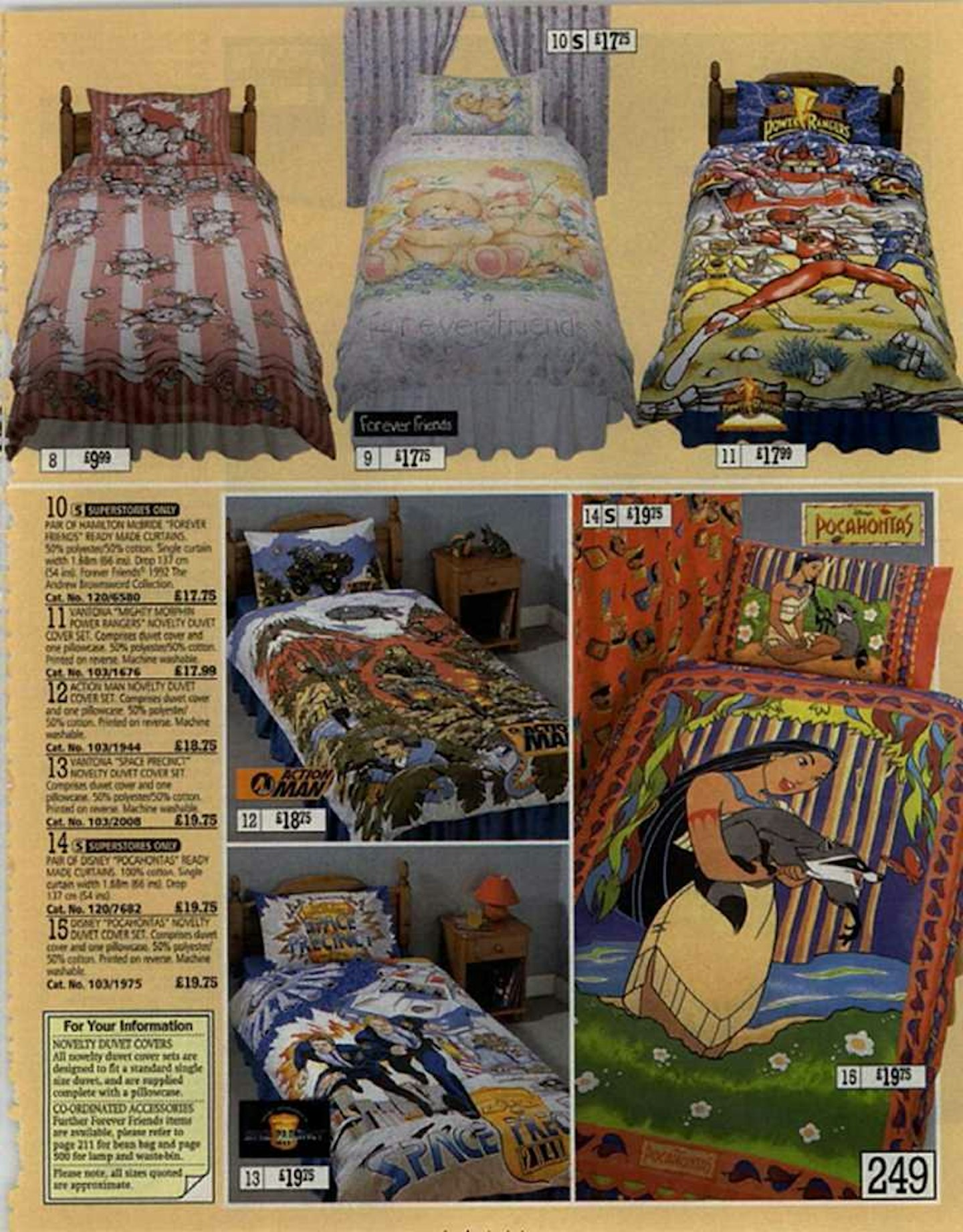 8 of 14
8 of 148. Themed Bedsheets
Making sleepovers better since 1999.
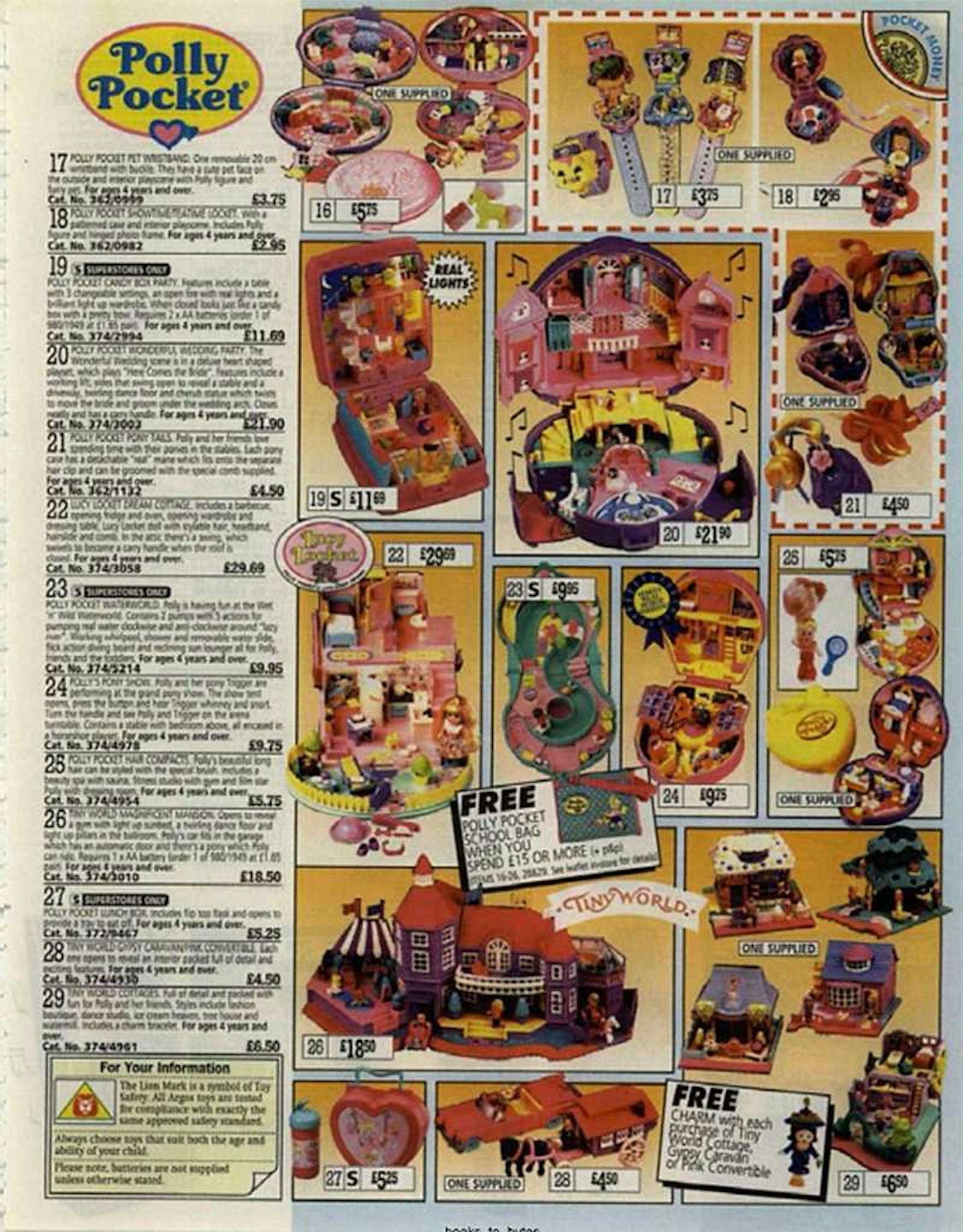 9 of 14
9 of 149. Polly Pocket Mansion
Fact: Polly Pocket had a nicer house than anything available on Help To Buy.
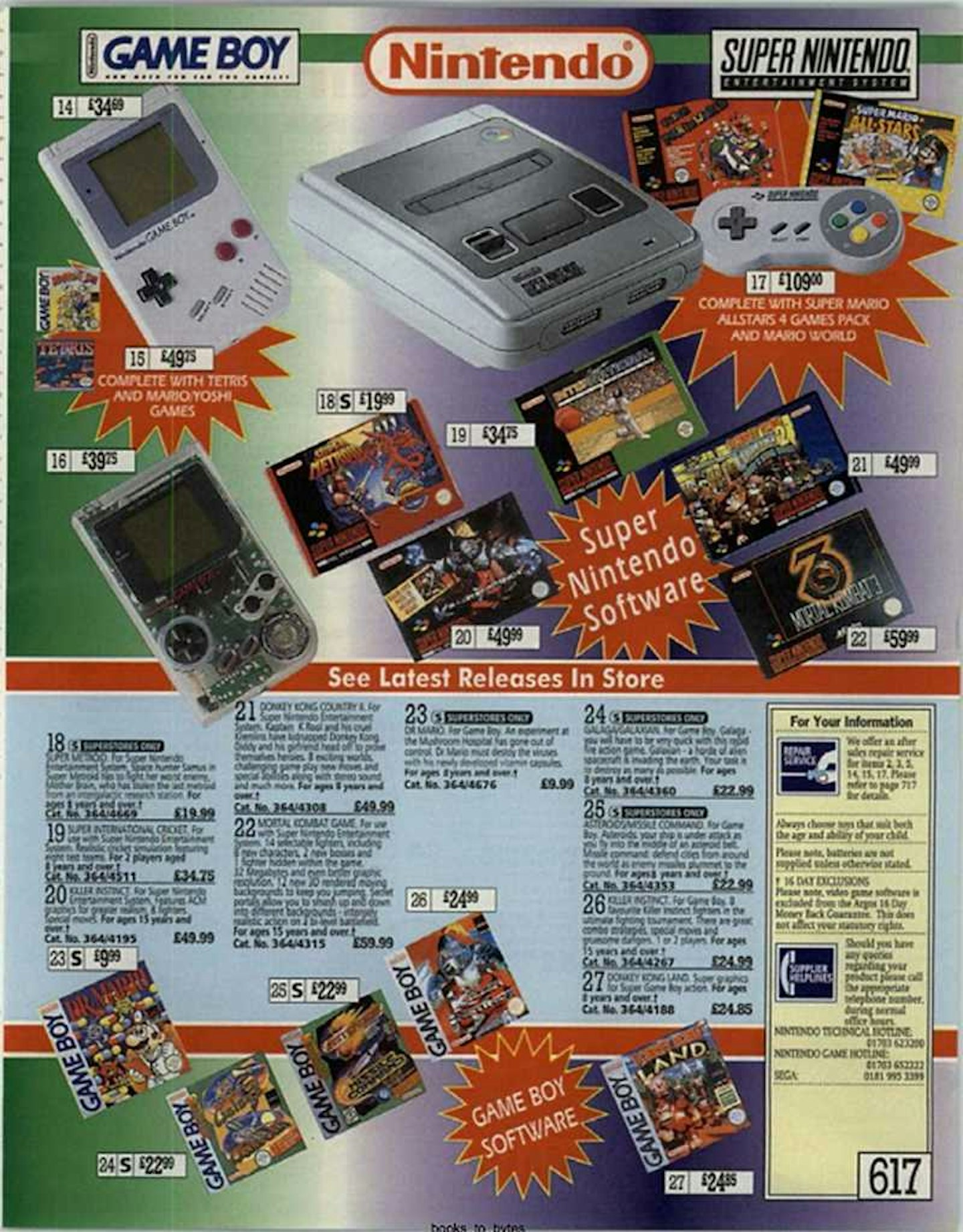 10 of 14
10 of 1410. GameBoy
More advanced than an electronic Disney game, less hardcore than a PlayStation. Otherwise known as the dream.
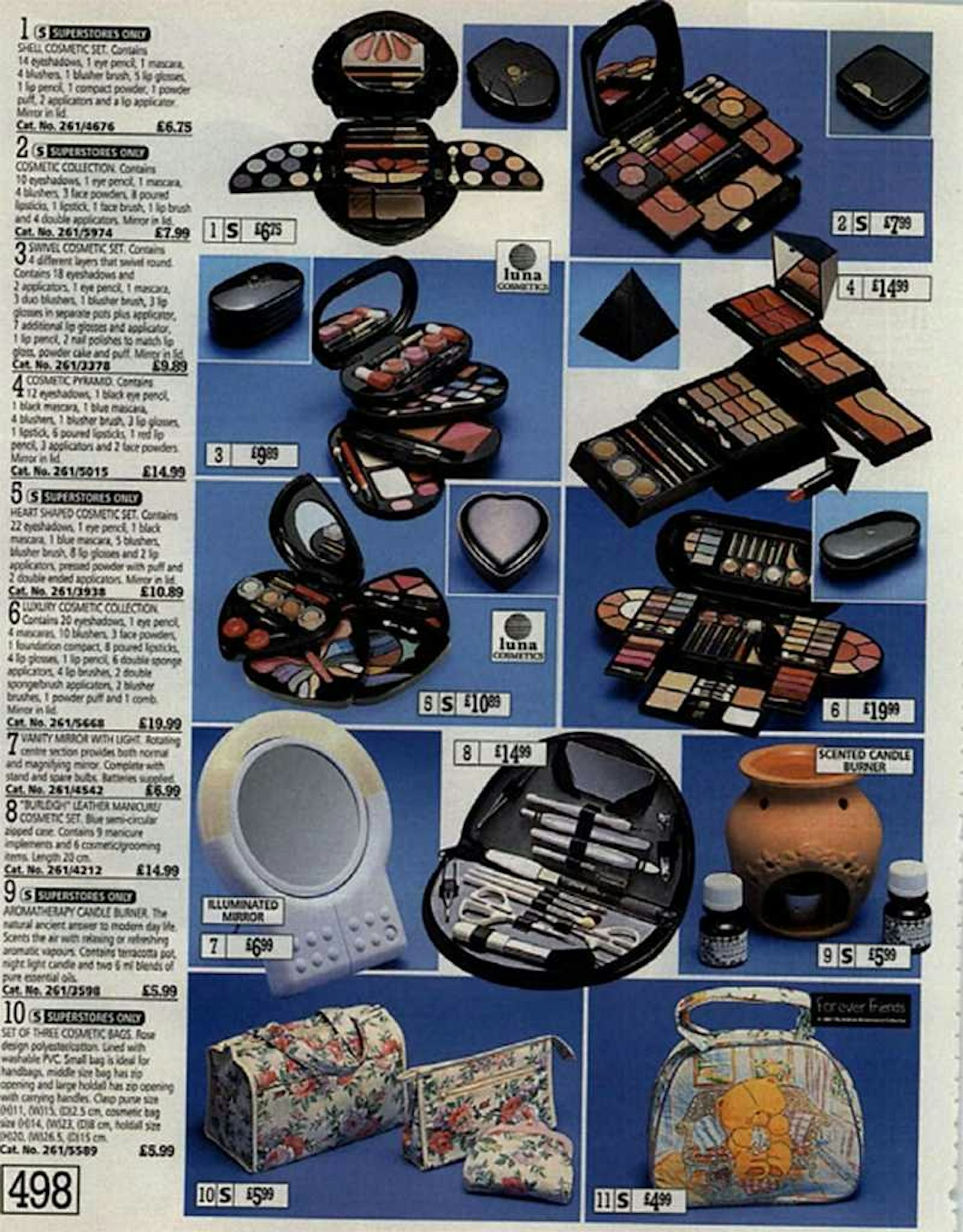 11 of 14
11 of 1411. Cosmetics Collection
It's super creepy for a child to have a bigger make-up collection than me, a 28-year-old beauty editor.
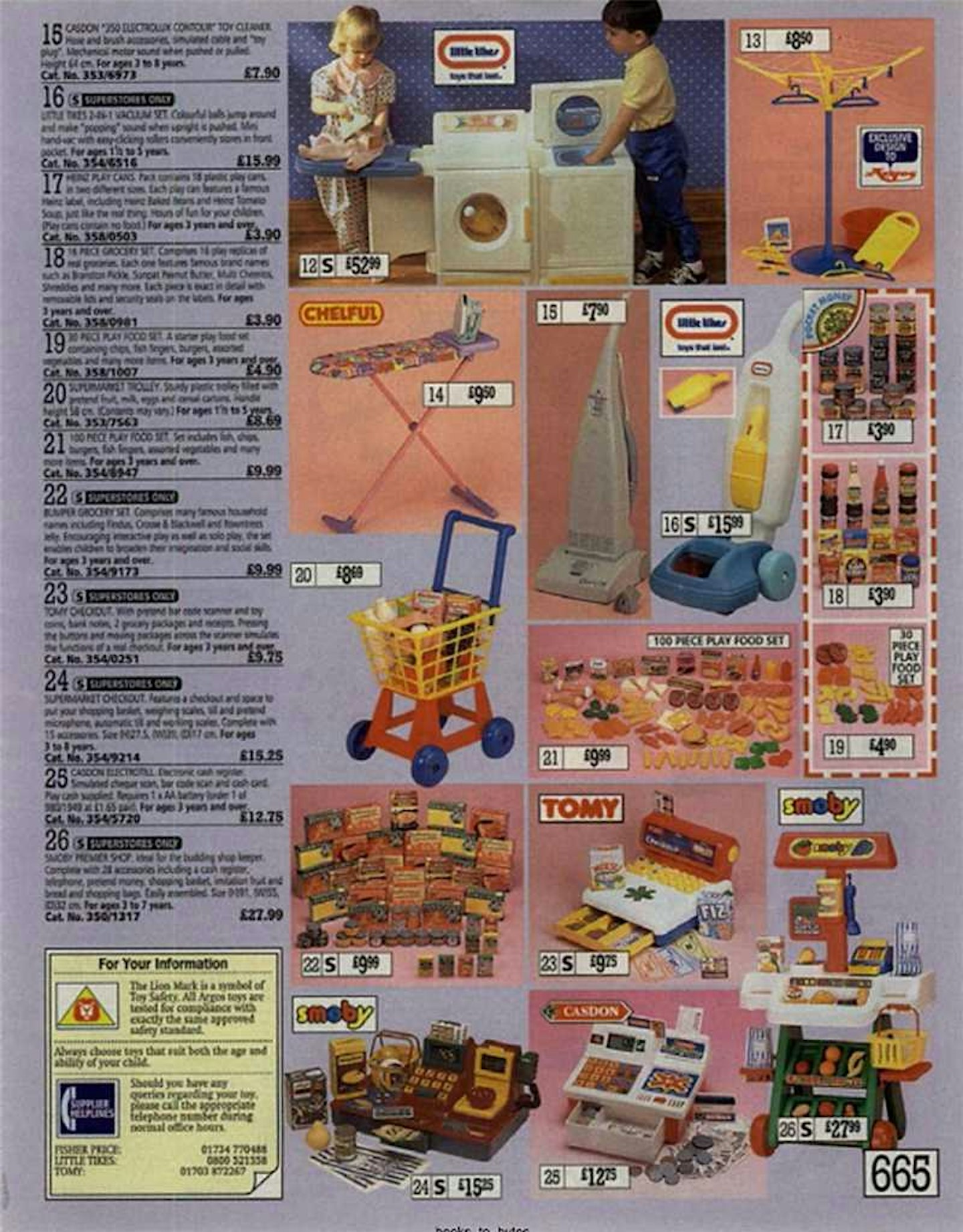 12 of 14
12 of 1412. Play Till
Who else learnt basic arithmetic on one of these fake tills?
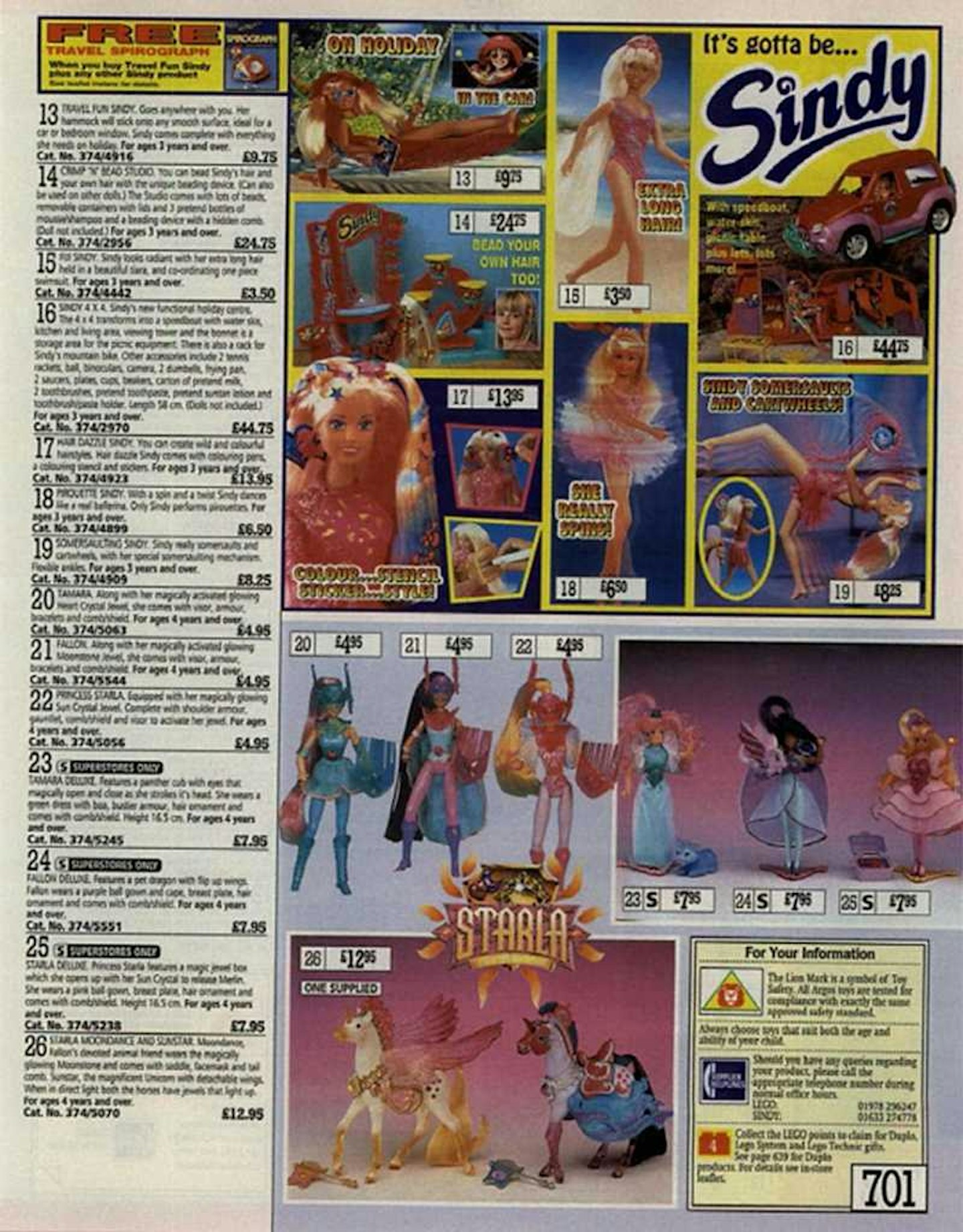 13 of 14
13 of 1413. Spinning Sindy
Seriously, what was more fun than a doll that could also be used as a weapon?
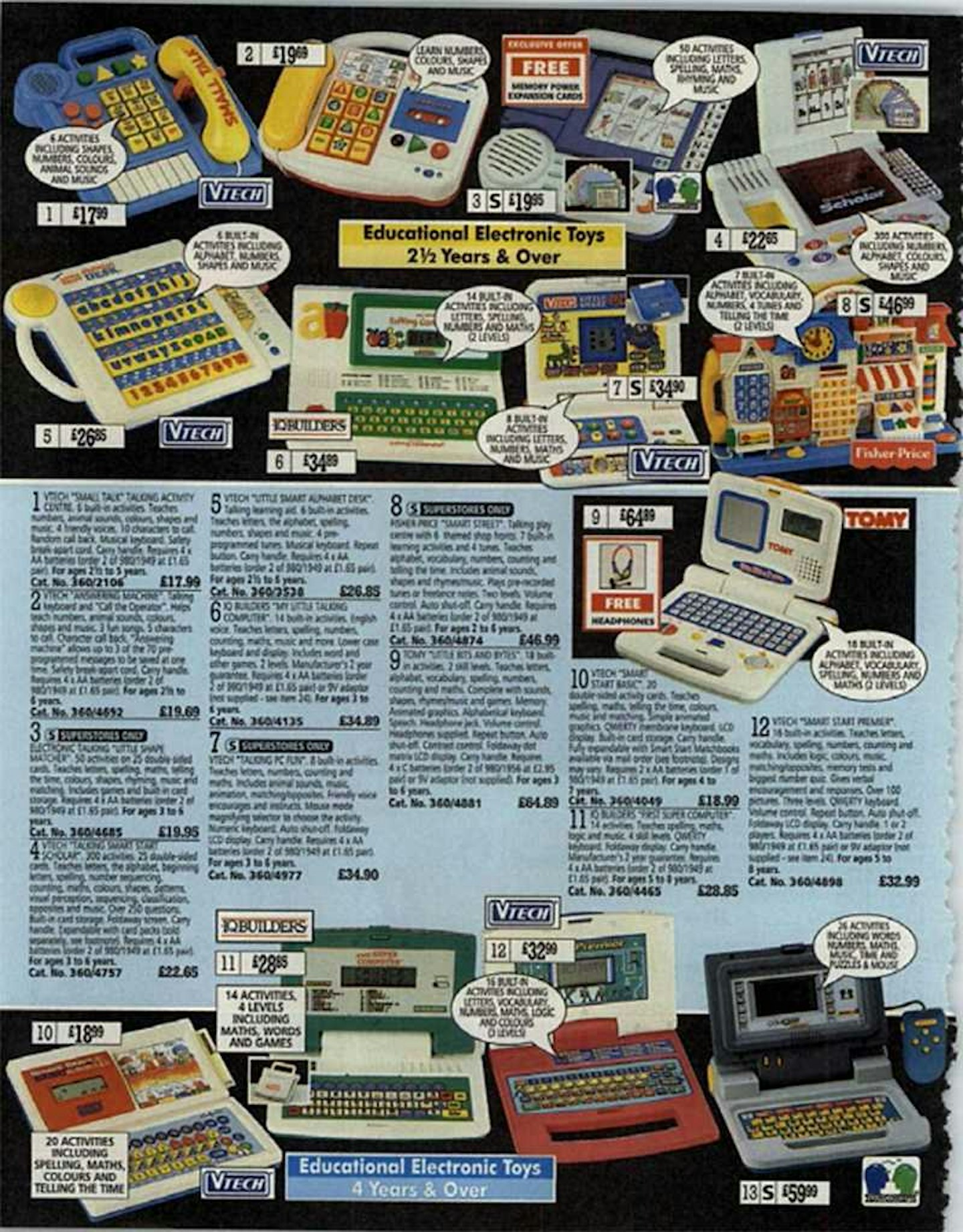 14 of 14
14 of 1414. Educational Electronics
When we were young enough to be fooled into thinking that learning could be fun as long as it came with an electronic accessory.
Mania was at its highest in America, but the UK was not immune. Even in the small Welsh town in which I grew up, Beanie Babies were a staple in every school. Several girls in the class brought in their modest collections, brandishing them in the playground, comparing each other’s haul. They focused on their cuteness, on how Ty’s approach to stuffing (much less than usual plush toys) made them pliant and soft. But they also seemed to treat them as more than toys: they were perceived as nest eggs. They were petted carefully, with clean hands. They were passed around with great care. The distinctive red, white and yellow tag had to remain intact. That way, they would be worth thousands one day, thanks to their limited numbers and eventual, looming retirement.
The children – mostly, but not exclusively girls – treated them like treasures to be cherished. There was something naïve about the whole operation, but also rather sweet: we - my Beanie Baby-owning peers and I – had long moved beyond the age of carrying around teddy bears and dolls. But, at the same time, we clearly weren’t quite ready to say goodbye to childhood yet. Secondary school loomed. Perhaps, on some level, these Babies were our transition toy, something we could bill as heirlooms or investments, rather than what they truly were: just sweet, cuddly toys.
It was all for nothing, of course. They did not accrue value. The average vintage Beanie Baby is worth no more than the original purchase. Very rare or famous toys – that Diana bear, for example – may get you £30, if you’re lucky, and there is one on eBay right now with a current top bid of 99p. There will be many a middle-aged man or woman who will look back at their hysteria and regret the passion and religious-like fervour with which they approached their collections. But for people my age – those who were primary school children when they became a must-have – they are still something special. Once upon a time, before we grew up and life got complicated, a simple stuffed bear made us feel invincible.
READ MORE: A Nostalgic Journey Into The Amazing World Of Spice Girls Merchandise
